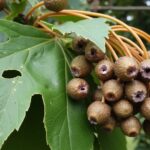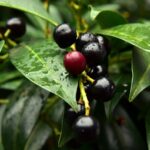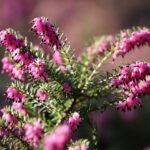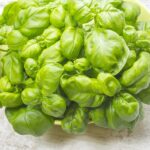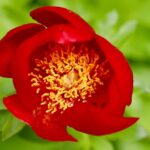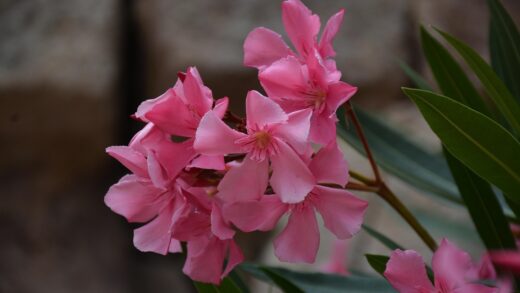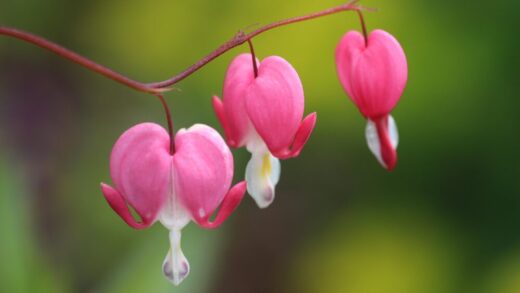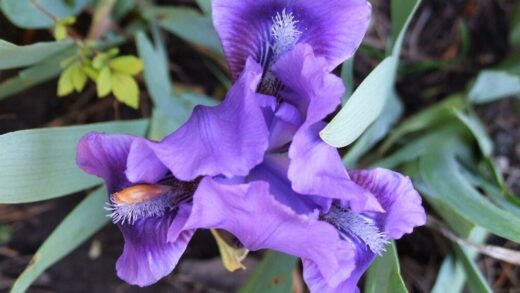Pruning is a vital horticultural practice that, when performed correctly and at the right time, can significantly enhance the health, vigor, and aesthetic appeal of Darwin’s barberry. While this is not a shrub that demands constant and intensive trimming, a strategic approach to pruning can maintain a desirable size and shape, encourage more prolific flowering, and improve the overall structure of the plant. The primary objectives of pruning this particular shrub are to remove any dead, damaged, or diseased wood, to thin out crowded branches for better air circulation, and to shape the plant after it has flowered. Understanding the plant’s natural growth habit and flowering cycle is essential to developing an effective pruning strategy that works with the shrub, not against it.
The most important rule to remember when pruning Darwin’s barberry is related to its flowering time. This shrub blooms in the spring on wood that was produced in the previous year, known as “old wood.” Therefore, if you prune the plant heavily in the late autumn, winter, or early spring before it has bloomed, you will be cutting off the very stems that are set to produce flowers. This would result in a significant loss of the season’s floral display. The golden rule, therefore, is to wait until the flowering period has finished before undertaking any major pruning tasks.
Immediately after the vibrant orange-yellow flowers have faded, typically in late spring or early summer, is the ideal window for pruning. At this time, you can clearly see the plant’s structure and can make informed cuts without sacrificing the next year’s blooms. Pruning at this point gives the shrub the entire growing season to produce new shoots, which will then mature over the summer and autumn, ready to carry the flower buds for the following spring. This timing ensures a continuous and reliable cycle of growth and flowering.
The tools you use for pruning are also important. Always use sharp, clean tools to make precise cuts that will heal quickly. For smaller stems, a good pair of bypass secateurs is ideal. For larger, thicker branches, you may need a pair of loppers or a pruning saw. It is crucial to sterilize your tools with rubbing alcohol or a dilute bleach solution before you start and between plants to prevent the potential spread of diseases. This simple hygienic step is a hallmark of good pruning practice.
The best time for pruning
Timing is arguably the most critical element of a successful pruning strategy for Darwin’s barberry. The optimal time for most pruning activities is immediately after the spring flowering season has concluded. This period, usually in late spring or early summer, allows the gardener to enjoy the full spectacle of the blooms before shaping the plant. Pruning at this juncture provides the maximum amount of time for the shrub to recover and produce the new growth that will bear the following year’s flowers.
Conducting any significant reshaping or size-reduction pruning during this post-flowering window is essential. If you delay pruning until later in the summer or autumn, you risk stimulating a flush of new growth that will not have adequate time to harden off before the first frosts. This tender, late-season growth is extremely vulnerable to winter damage, which can set the plant back and create dead material that will need to be removed the following spring. Therefore, aim to have all major pruning completed by mid-summer at the latest.
While the main pruning is done after flowering, there are minor trimming tasks that can be performed at other times of the year. Throughout any season, you can and should remove any wood that is clearly dead, damaged by wind or snow, or showing signs of disease. This is often referred to as the three D’s of pruning (dead, damaged, diseased). Removing this material as soon as you spot it helps to maintain the plant’s health and appearance and can be done at any time without harming the plant.
In summary, the pruning calendar for Darwin’s barberry is straightforward. The main structural and formative pruning should be reserved for the “after-bloom” period in late spring. Lighter trimming and the removal of the three D’s can be done whenever necessary. Adhering to this schedule ensures you work in harmony with the plant’s natural life cycle, promoting both its health and its magnificent floral display.
Techniques for formative pruning and shaping
Formative pruning is the process of shaping the shrub to create a strong, well-balanced structure, and it is particularly important for young plants. The goal is to encourage a dense, multi-stemmed habit rather than allowing a few dominant stems to grow tall and leggy. After planting a new barberry, you can encourage bushiness by trimming back the main stems by about one-third after the first flowering season. This encourages the plant to break new shoots from lower down, creating a fuller base.
When shaping an established plant, the aim is to maintain its natural, graceful, arching habit while keeping it within its allotted space. Stand back frequently during the pruning process to assess the overall shape and ensure you are creating a balanced form. The goal is to thin and shorten branches in a way that is not immediately obvious, leaving the plant looking naturally tidy, not sheared. Make your cuts at a slight angle, just above an outward-facing bud, to direct the new growth away from the center of the plant.
One common technique is the “thinning cut,” where an entire branch is removed back to its point of origin on a larger stem or back to the main trunk. This is an excellent method for reducing crowding and improving air circulation within the plant. By selectively removing a few older, thicker stems from the center of the shrub, you allow more light to penetrate the interior, which encourages new growth from the base and rejuvenates the entire plant. This helps to prevent the shrub from becoming bare and woody at its center.
For general size reduction, use “heading cuts,” which involve shortening the length of a branch. To maintain a natural look, vary the lengths at which you cut the branches back, a technique known as feathering. Avoid shearing the plant into a formal, geometric shape unless you are specifically creating a formal hedge. Shearing can create a thick outer layer of foliage that shades out the interior of the plant, leading to dieback inside the shrub and a less healthy plant overall.
Pruning for hedging
Darwin’s barberry, with its dense, spiny, evergreen foliage, makes an outstanding choice for a hedge, whether for privacy, as a boundary marker, or for security. When pruning it as a hedge, the principles of timing remain the same—the main trim should be done after flowering. However, the technique is different, as the goal is to create a uniform, dense surface. Using a pair of sharp hedge shears or a powered hedge trimmer is the most efficient method for this task.
A crucial principle for a healthy hedge is to shape it so that it is wider at the base than at the top. This classic “A-frame” or tapered shape is vital because it allows sunlight to reach the lower branches of the hedge. If the top of the hedge is wider than the bottom, it will shade out the lower portions, causing them to become thin, bare, and leggy over time. Ensuring the base is always the widest part maintains dense foliage all the way to the ground.
When establishing a new hedge, it is important to be patient and focus on building a strong structure from the ground up. In the first couple of years after planting, you should trim the young plants quite hard after flowering to encourage dense, bushy growth right from the base. This may seem counterintuitive, but it prevents the hedge from becoming “gappy” at the bottom as it matures. Once the hedge has reached the desired height, you can maintain it with an annual trim.
After the main post-flowering trim, a very light secondary trim can sometimes be carried out in mid-to-late summer to tidy up any errant shoots and maintain a crisp shape. However, this trim should be very light and should not be done any later than the end of summer to avoid stimulating new growth that could be damaged by frost. A well-maintained barberry hedge is not only functional but also beautiful, offering year-round structure and a spectacular floral display in spring.
Rejuvenation pruning for overgrown shrubs
Over time, an older Darwin’s barberry may become overgrown, woody, and congested, with diminished flower production and a bare center. In such cases, a more drastic approach known as rejuvenation or renewal pruning can be undertaken to restore its vigor. This process involves a hard pruning that encourages the plant to send up a flush of new, healthy stems from its base. It is a highly effective technique for giving an old shrub a new lease of life.
There are two main approaches to rejuvenation pruning. The first is a gradual, three-year process, which is often less of a shock to the plant. In the first year (after flowering), you remove one-third of the oldest, thickest stems, cutting them right back to the base of the plant. In the second year, you remove another third of the old stems, and in the third year, you remove the remaining old stems. By the end of this period, you will have a completely renewed shrub composed of vigorous new growth.
The second method is more drastic and involves cutting the entire shrub back to within 15-30 centimeters of the ground. This should be done in late winter or early spring, just before new growth begins. While this method sacrifices the flowers for one season, it can be very effective for a very overgrown and unhealthy plant. The shrub will respond by sending up a multitude of new shoots from the base. You can then select the strongest and best-placed of these new shoots to form the new framework of the plant, trimming out the weaker ones.
After any hard pruning, it is important to provide the plant with good aftercare to support its recovery. Apply a balanced, slow-release fertilizer around the base of the plant and water it well. Applying a fresh layer of compost or mulch will also help to conserve moisture and provide nutrients. With this support, the shrub will quickly recover, and although it may take a year or two to return to its former size, it will be healthier, more attractive, and more productive.
📷 Michael Wolf, CC BY-SA 3.0, via Wikimedia Commons

